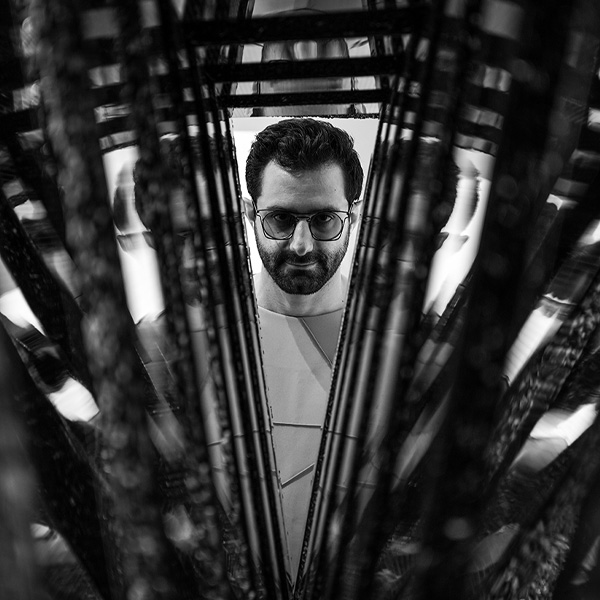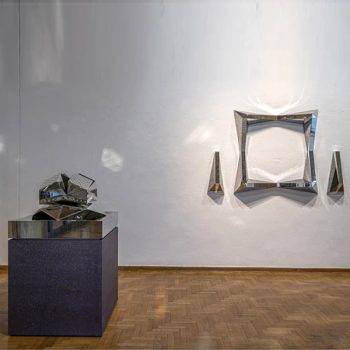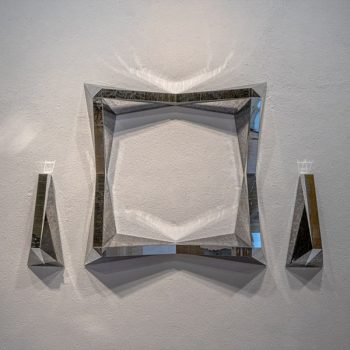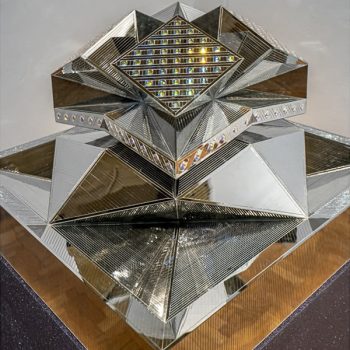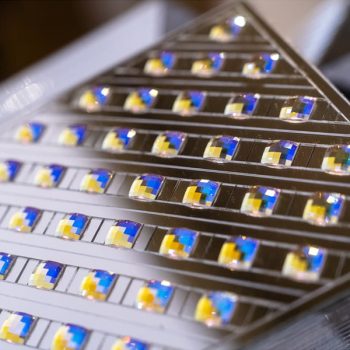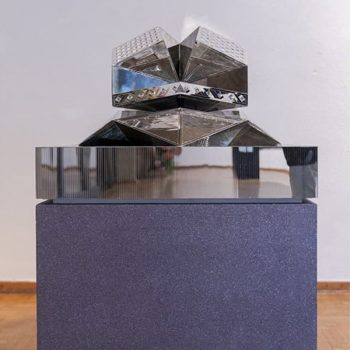Aref Montazeri was born in Tehran, Iran in 1986. He is a sculptor removed from conventional practices, he pursues a novel approach to mirror art that involves large numbers of mirror cuts and meticulous attention to detail. Conceptually, he follows an approach he has termed “The MIRROR follows narrative”; Which favours materialism over ornamentalism and resilience of design over buildability. His design apparatus consists of three criteria: Narrative, Material and Technique. Which is also the way he looks at art and creates it.
He started his training during the time he collaborated with Monir Shahroudy Farmanfarmaian on design and fabrication of around 60 sculptures (2009-15). Additionally, he was involved in fabrication of Parviz Tanavoli’s sculptures and jewelries (2012-14).
He was artist-in-residence and collaborated with TUIC (Tehran Urban Innovation Center) on research projects in areas such as smart techniques and innovative materials (2016-18). Moreover he was artist-in-residence for seven months, in a collaboration with Maleki Collection in Beaulieu-sur-Mer in south of France, he fabricated three sculptures for this project, “EMBRACE”, “MIRROR 11” and the most laborious mirror artwork titled “PARADOX” which consists of 70,000 mirror pieces (2018-20).

